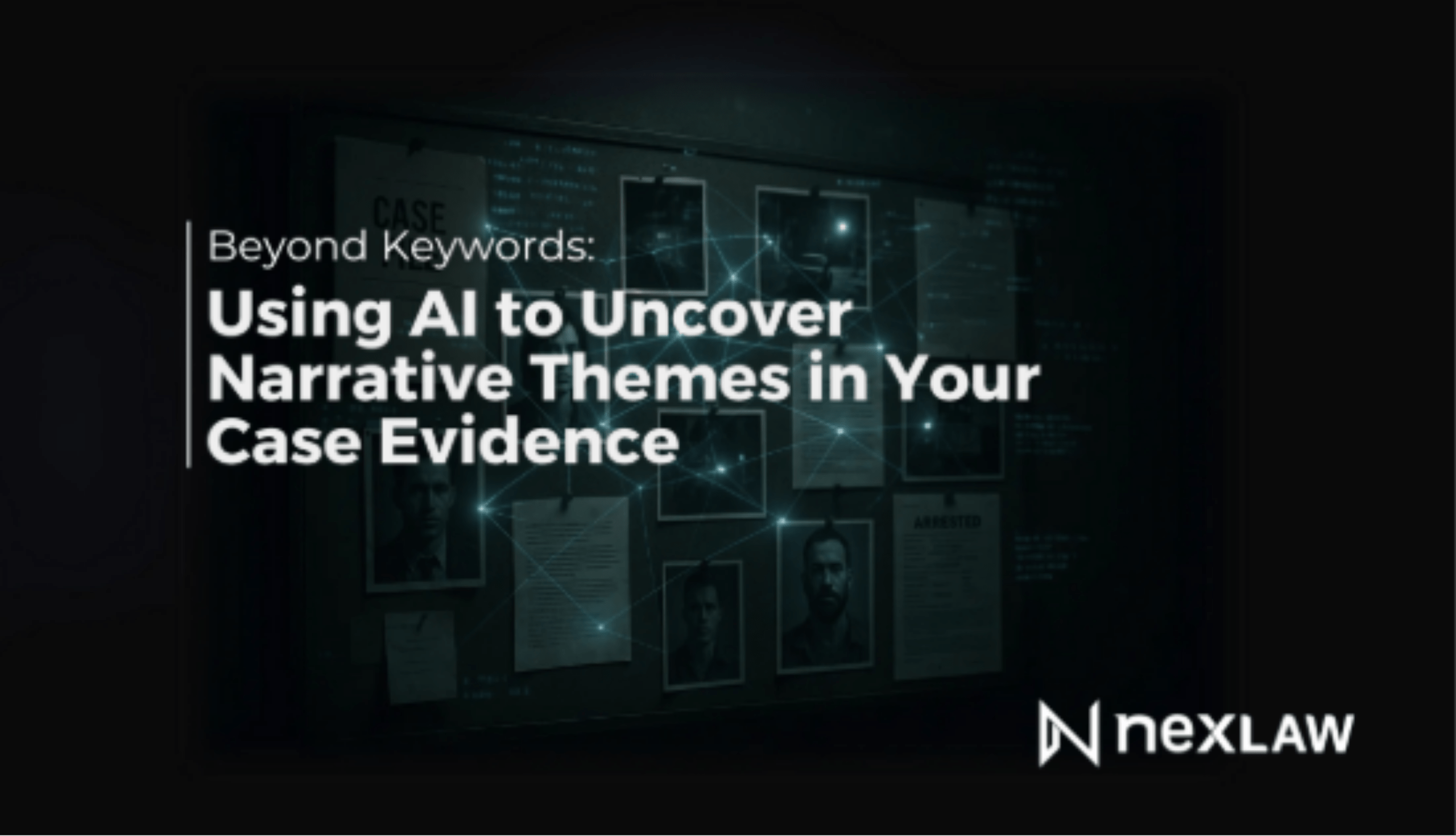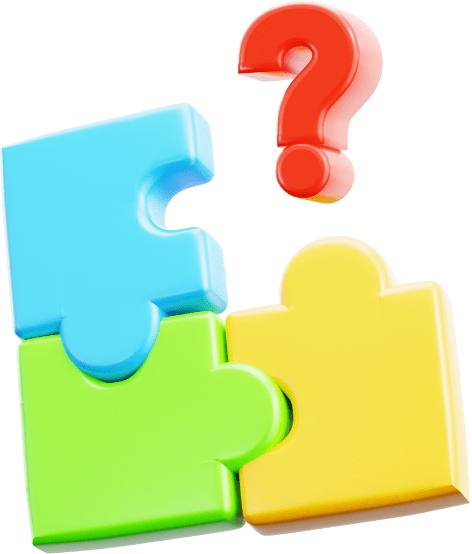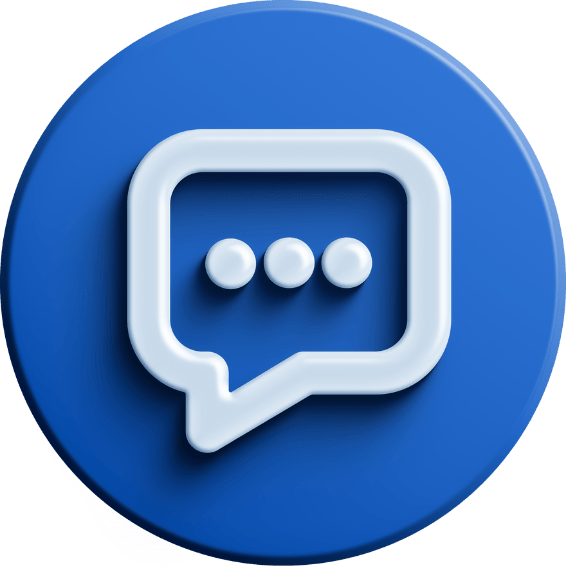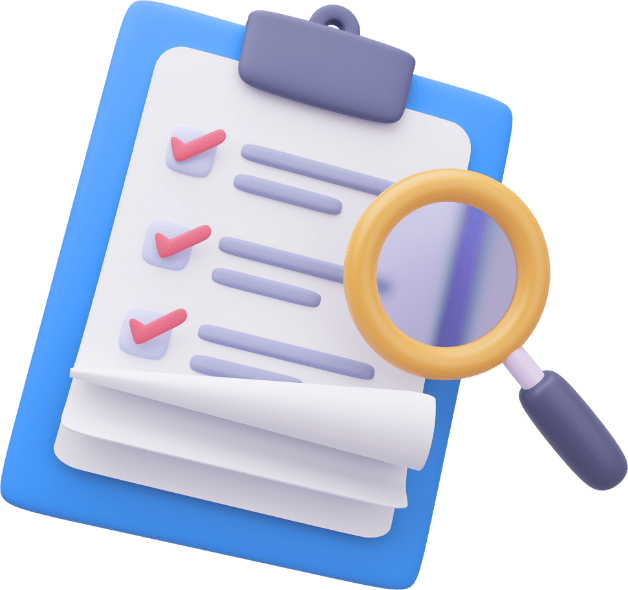Beyond Keywords: Using AI to Uncover Narrative Themes in Your Case Evidence

Beyond Keywords: Using AI to Uncover Narrative Themes in Your Case Evidence

In the art of trial advocacy, facts are merely the building blocks; the story is the architecture that gives them meaning and persuasive power. A U.S. trial lawyer can present a mountain of evidence, but if it doesn’t cohere into a compelling, easily understood narrative, it will fail to persuade a judge or jury. The challenge in modern litigation is that the core themes of a case are often buried within an avalanche of data. Finding the story: the “why” behind the “what” is a cognitive, creative process that traditional legal tech has struggled to support. This is where the latest generation of Litigation AI marks a profound leap forward, using advanced analytics to help lawyers uncover the hidden narrative themes that win cases.
This guide explores how a sophisticated Legal AI platform like NexLaw AI can move beyond simple keyword search to become your partner in the art of legal storytelling.
The Problem: The Limits of Keyword-Based Review
For years, e-discovery has been dominated by keyword searching. While useful for finding specific documents, this approach has a critical flaw: it’s conceptually blind. It can find every email that mentions the word “delay,” but it can’t tell you the story of why the delay occurred. It can’t distinguish between a routine project update and a panicked admission of fault. This limitation often leads to:

A Fragmented Understanding:
Lawyers end up with a collection of isolated facts, struggling to see the bigger picture of how they connect.

Missed Subtext:
The tone, sentiment and underlying relationships between communicating parties are often lost in a keyword-driven review.

A Weaker Narrative:
Lawyers end up with a collection of isolated facts, struggling to see the bigger picture of how they connect.
The AI Advantage : From Data Points to Story Arcs
Modern AI Legal Assistants use a technology called “concept clustering” or “topic modeling” to overcome these limitations. Instead of looking for specific words, the AI analyzes the entire dataset to identify the core concepts and themes being discussed. It understands that “budget overrun,” “financial shortfall,” and “cost issues” are all part of the same conceptual theme, even if they don’t share keywords. This capability allows the AI to:
- Group Related Conversations: The AI can pull together every email, text message and document related to a specific theme, allowing you to review entire conversations in context.
- Identify Key Actors: It can pinpoint which individuals are central to which themes, helping you understand who the key players are in each part of the story.
- Visualize Connections: Advanced platforms can create visual maps of the data, showing you how different themes and individuals are connected, revealing the underlying structure of your case narrative.
This conceptual understanding allows you to move from a “bottom-up” review of individual documents to a “top-down” understanding of the entire story.

Act now to transform your
practice and achieve your goals.
See NexLaw in Action
Start your free trial and kick off your legal AI journey with a personalized demo
*By submitting the form, you agree to the Terms of Service and Privacy Policy
A Step-by-Step Workflow with NexLaw AI
Using AI to find your case narrative is an interactive, exploratory process that enhances your strategic intuition.
The journey begins by uploading your complete discovery record into NexLaw AI’s ChronoVault. This includes all emails, internal reports, contracts and other communications. The AI processes this unstructured data, preparing it for deep thematic analysis.

Once the data is processed, you can activate the AI’s topic modeling feature. The AI will analyze the entire dataset and present you with a list of the core themes it has identified. In a breach of contract case, for example, the AI might identify themes such as:
- Initial Contract Negotiations
- Scope of Work Disputes
- Payment Schedule Issues
- Project Delays and Excuses
- Termination Discussions

This story: a narrative of deceit was invisible when looking at individual documents but becomes crystal clear when viewed thematically.
Step 3: Explore the Thematic Clusters
You can then click on any of these themes to see every document and communication related to that topic. As you explore the “Project Delays and Excuses” cluster, you might discover a clear narrative arc:
- Phase 1: Early emails from the defendant are optimistic and confident.
- Phase 2: A few weeks later, the tone shifts to one of concern, with internal emails discussing “unforeseen challenges.”
- Phase 3: The defendant begins emailing your client with a series of excuses, each one contradicting the last.
- Phase 4: Finally, you see an internal email where the defendant admits they underbid the project and lacked the necessary resources from the start.

This story: a narrative of deceit was invisible when looking at individual documents but becomes crystal clear when viewed thematically.
Step 4: Build Your Trial Outline Around Narrative Themes
With these powerful narrative themes identified, you can structure your entire case presentation around them. Your opening statement, witness examinations and closing argument can all be built around telling this compelling story, supported at every turn by the AI-curated evidence.
Case Study: A: Partnership Dispute
A lawyer is representing a partner who was forced out of a business. The opposing party claims the split was amicable. The lawyer uses NexLaw AI to analyze two years of partner emails. The AI’s topic modeling feature identifies a cluster of communications labeled “Control and Decision-Making.” Exploring this theme, the lawyer uncovers a year-long pattern of behavior where the opposing partner systematically excluded the client from key decisions, altered company records and secretly negotiated with competitors. This narrative of a “slow-motion corporate coup” becomes the central theme of the case, leading to a swift and favorable settlement.
The Story Wins
In a world saturated with information, the ability to tell a clear and compelling story is more valuable than ever. For the U.S. litigator, Legal Storytelling is not a soft skill; it’s a core strategic competency. By leveraging AI to uncover the hidden narrative themes in your evidence, you can transform a complex set of facts into a simple, powerful and winning story.
Book a Personalized Demo to see NexLaw AI’s thematic analysis in action.
Explore Our Plans and discover how a narrative-driven approach can revolutionize your litigation strategy.
Interested In Features Like This?
Receive complimentary access to our resources and a personalized live demo tailored to your needs.


